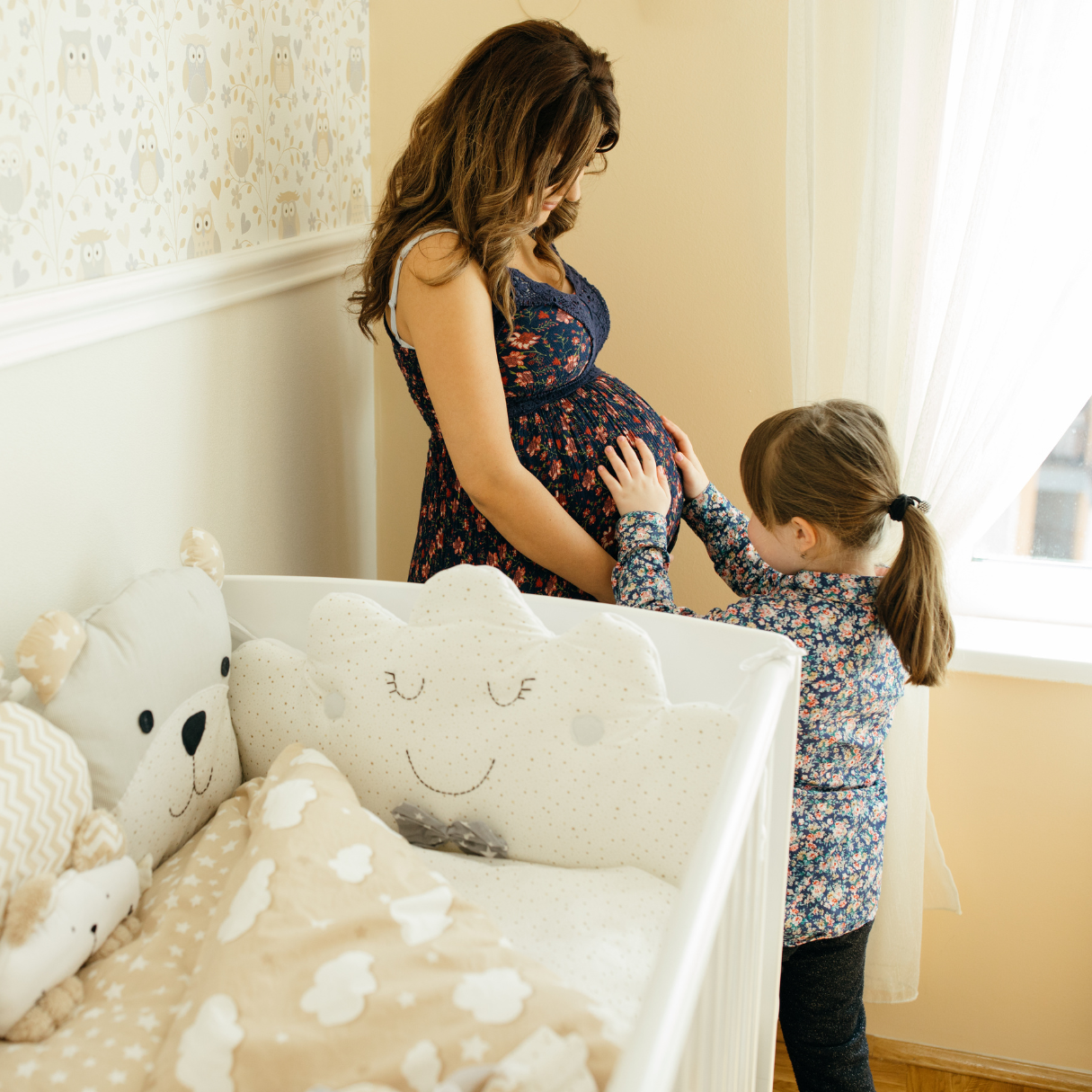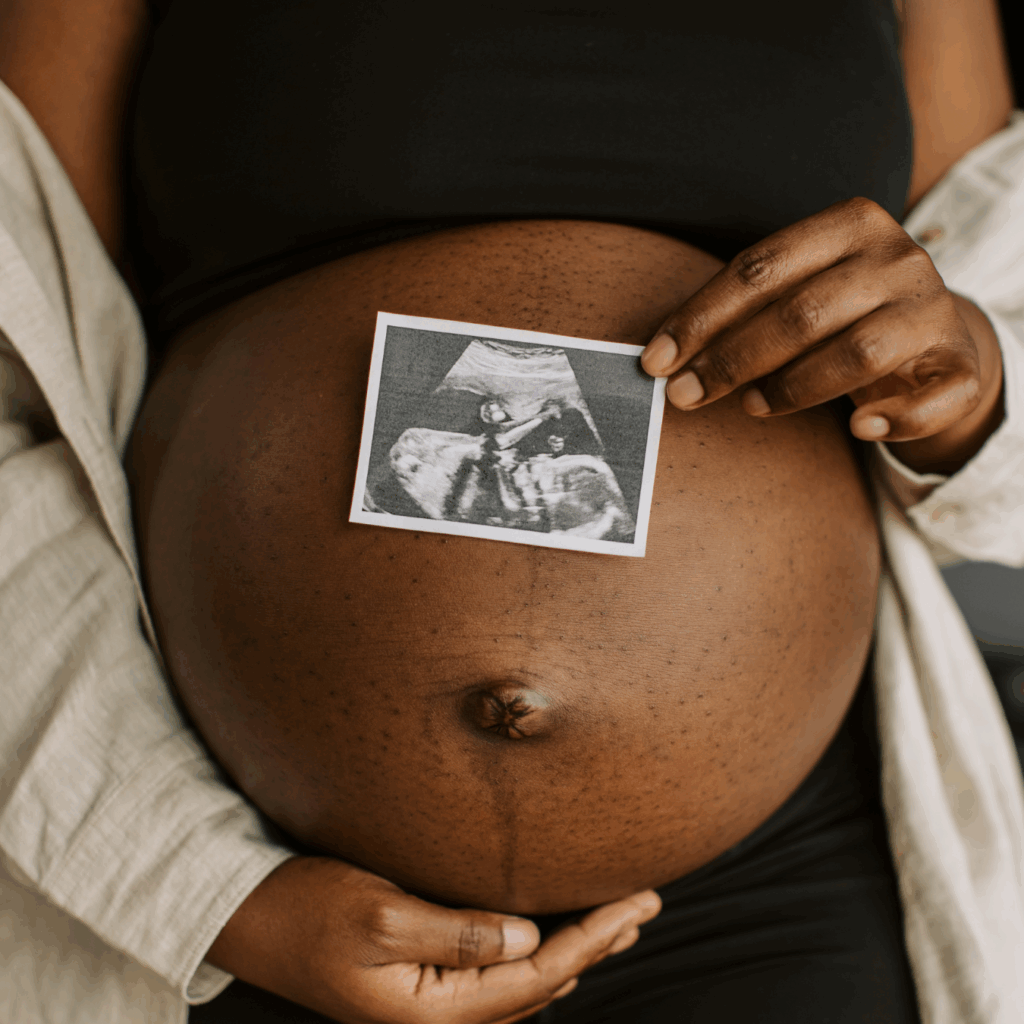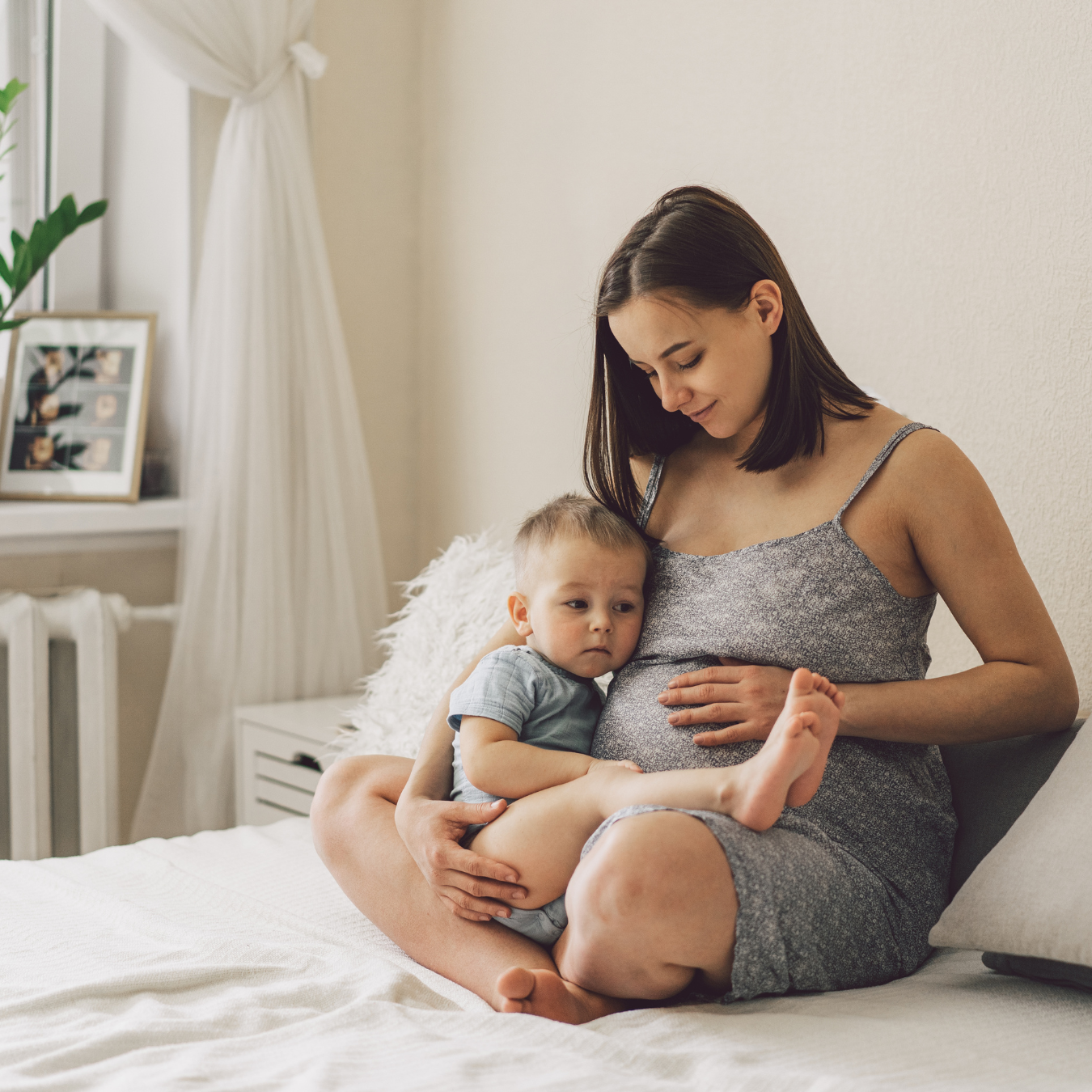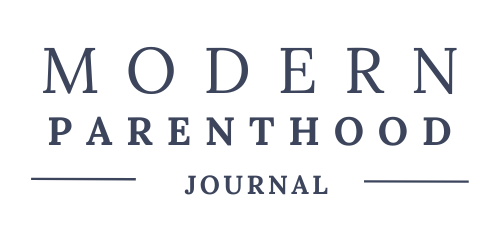First Pregnancy vs. Second: What Actually Changes (And What Stays the Same)
The real differences between your first and subsequent pregnancies—from physical changes to emotional experiences

The Question Every Expecting Parent Asks
“Will my second pregnancy be different from my first?” It’s a question that crosses the mind of every parent expecting their second child, usually followed by a dozen more: Will I show earlier? Will labor be faster? Will I feel more prepared or more anxious? Will my body remember what to do?
The truth is both reassuring and surprising. While no two pregnancies are exactly alike—even for the same person—there are predictable patterns and differences that most women experience between their first and subsequent pregnancies. Understanding these changes can help you navigate your second pregnancy with realistic expectations and greater confidence.
Whether you’re currently expecting your second baby or planning for the future, knowing what might change (and what likely won’t) can help you prepare emotionally, practically, and physically for this new chapter in your growing family’s story.
Your Body Remembers: Physical Changes in Second Pregnancy
Perhaps the most noticeable differences between first and second pregnancies are physical. Your body has been through this process before, and it shows—often in ways that surprise even experienced mothers.
Showing Earlier and More Prominently
Dr. Sarah Prager, professor of obstetrics and gynecology at the University of Washington, explains that “women typically show earlier in subsequent pregnancies because the abdominal muscles and uterine ligaments have been stretched before and don’t provide the same level of support.” While first-time mothers might not show until 16-20 weeks, many women are visibly pregnant by 12-14 weeks with their second child.
This earlier showing isn’t necessarily about weight gain or baby size—it’s about your body’s muscle memory. Your abdominal muscles, having been stretched during your first pregnancy, simply don’t hold everything as tightly the second time around. Some women find this exciting, finally looking pregnant earlier, while others feel self-conscious about the rapid changes.
Different Movement Patterns
Feeling your baby move for the first time is one of pregnancy’s most magical moments, and it often happens earlier with subsequent pregnancies. First-time mothers typically feel movement between 18-22 weeks, while experienced mothers may feel those first flutters as early as 15-16 weeks.
This earlier recognition isn’t just about the baby moving sooner—it’s about your ability to identify those subtle movements. Dr. Rebecca Starck, maternal-fetal medicine specialist, notes that “experienced mothers know what fetal movement feels like, so they can distinguish it from other sensations more quickly.”


Breast Changes May Be Less Dramatic
Many women notice that their breast changes are less pronounced during their second pregnancy. While first pregnancies often bring significant breast growth, tenderness, and sensitivity, subsequent pregnancies may produce more subtle changes. This occurs because breast tissue has already undergone the initial adaptations necessary for breastfeeding.
However, if you didn’t breastfeed your first child or stopped early, you might experience breast changes similar to your first pregnancy as your body prepares for this new breastfeeding experience.
Skin and Stretch Mark Realities
The relationship between second pregnancies and stretch marks is complex. Some women who avoided stretch marks during their first pregnancy develop them during their second, while others see little change. Existing stretch marks may become more prominent as skin stretches again, but they typically don’t worsen significantly.
Pregnancy hormones affect skin differently in each pregnancy, so you might experience different patterns of darkening around the nipples, abdominal line (linea nigra), or facial changes (melasma). These variations are normal and reflect the unique hormonal environment of each pregnancy.
The Emotional Landscape: How Feelings Change
The emotional experience of second pregnancy often differs dramatically from the first, shaped by knowledge, confidence, and the reality of parenting responsibilities.
Less Anxiety, Different Worries
First pregnancies are often characterized by intense focus on every symptom, every milestone, and every potential concern. By the second pregnancy, most women feel more confident about normal pregnancy experiences and less likely to panic over minor symptoms.
Dr. Catherine Monk, professor of medical psychology at Columbia University, observes that “women in their second pregnancy typically have less anticipatory anxiety about the unknown aspects of pregnancy and childbirth, but they may develop new concerns about managing two children or dividing their attention.”
The worries shift from “Is this normal?” to “How will I handle everything?” This transition reflects growth in pregnancy confidence but new challenges in family dynamics.
Guilt and Comparison
Many mothers struggle with feelings of guilt during their second pregnancy. Common concerns include not being as excited as they were the first time, not documenting the pregnancy as thoroughly, or feeling like they’re somehow shortchanging their unborn child.
These feelings are incredibly common and completely understandable. The novelty of pregnancy has worn off, and you’re managing the demands of an existing child while growing another. This doesn’t mean you love your second child less—it means you’re being realistic about your energy and attention.
Bonding Experiences May Differ
Some women worry that they won’t bond as strongly with their second child because the pregnancy experience feels less focused or special. Research suggests that maternal bonding during pregnancy varies greatly among individuals and pregnancies, and feeling different doesn’t predict your relationship with your child after birth.
Many mothers find that while the pregnancy bonding experience may be less intense, their connection with their second child develops beautifully after birth, often enhanced by their increased confidence as parents.
Energy Levels and Symptom Patterns
The physical demands of pregnancy combined with caring for another child create a unique challenge that first-time mothers don’t face.
Fatigue Hits Differently
First pregnancy fatigue often feels overwhelming because it’s new and you’re not sure how to manage it. Second pregnancy fatigue can feel even more challenging because you can’t simply rest when tired—you have another child to care for.
Many women report that their fatigue patterns differ between pregnancies. Some experience more exhaustion earlier in their second pregnancy due to the combination of pregnancy hormones and sleep disruption from their first child. Others find they have more energy because their bodies are more efficient at pregnancy adaptations.
Morning Sickness Variations
Morning sickness can be completely different between pregnancies. Some women who experienced severe nausea with their first child sail through their second pregnancy with minimal symptoms, while others face morning sickness for the first time during their second pregnancy.
These differences reflect the unique hormonal environment of each pregnancy and possibly the different genetic contributions from each baby’s father. Don’t assume your second pregnancy will mirror your first in terms of symptoms—each pregnancy truly is unique.
Managing Symptoms While Parenting
The most significant challenge for many women is managing pregnancy symptoms while caring for their first child. Nausea becomes more complicated when you need to prepare meals for a toddler, and fatigue is harder to address when you can’t nap during the day.
Successful navigation often requires creative solutions: accepting help from family and friends, simplifying meals and routines, and letting some household standards slide. This isn’t about being a “bad mother”—it’s about being a realistic one.
Labor and Delivery: What Experience Teaches
One of the most common questions about second pregnancies concerns labor and delivery. While every birth is unique, there are patterns that many women experience.
Labor Tends to Be Shorter
Second labors are typically shorter than first labors, though this isn’t guaranteed. The average first labor lasts 12-14 hours, while subsequent labors often last 6-8 hours. This occurs because your cervix and birth canal have gone through the process before and may dilate and stretch more efficiently.
Dr. William Gilbert, director of women’s services at Sutter Health, explains that “the tissues have been stretched before and have memory of the process, which often allows for more efficient labor progression.”
However, this doesn’t mean second labors are necessarily easier. Some women experience more intense contractions that progress rapidly, which can feel overwhelming even if the overall time is shorter.
Different Pain Perception
Many women report that they perceive labor pain differently during their second birth. Some feel more prepared and able to cope because they know what to expect, while others find the intensity surprising despite their previous experience.
The difference often lies not in the actual pain level but in your ability to interpret and respond to the sensations. Knowing that labor pain has a purpose and an end can make it more manageable, even when it’s intense.
Recovery Expectations
Postpartum recovery after a second baby often differs from the first experience. Some aspects may be easier—you know what to expect from healing, breastfeeding may be more straightforward, and you might feel more confident in your parenting abilities.
However, recovery can also be more challenging because you’re healing while caring for two children. Sleep deprivation may be more severe, and you have less time to rest and focus on your own healing.
Practical Considerations: Life with Two
The logistical aspects of second pregnancy often present the biggest learning curve for families.
Prenatal Care with a Toddler
Attending prenatal appointments becomes more complex when you have a child to bring along or arrange childcare for. Many women find they attend fewer optional appointments or classes during their second pregnancy, not because they care less, but because their time and energy are divided.
This is completely normal and doesn’t indicate inadequate prenatal care. Focus on the essential appointments and don’t feel guilty about skipping the birth class you attended religiously during your first pregnancy.
Preparing Your First Child
One of the biggest differences in second pregnancy is helping your first child prepare for their new sibling. This process requires careful consideration of timing, language, and expectations.
Most experts recommend waiting until the second trimester to tell young children about the pregnancy, as the concept of time is still developing and nine months can feel like forever to a toddler. Focus on simple, concrete concepts they can understand rather than complex explanations about pregnancy and birth.
Reading books about becoming a big brother or sister, involving them in age-appropriate preparations, and maintaining their routines can help ease the transition for your whole family.

Nesting Instincts with Constraints
The nesting instinct may feel different during your second pregnancy. You might have less time and energy for elaborate nursery preparations, or you may feel pressure to create something special for your second child despite already having baby gear.
Many parents find that their nesting energy focuses more on organizing family systems and routines rather than decorating and shopping. This shift reflects the practical reality of preparing for two children rather than one.
Financial and Planning Realities
Second pregnancies often come with different financial considerations and planning challenges than first pregnancies.
Budget Considerations
While you may have many baby items from your first child, there are still costs associated with a second pregnancy and baby. Consider factors like childcare during labor, potential time off work, medical expenses, and ongoing costs of raising two children.
Some families find they need larger cars, bigger homes, or different childcare arrangements, while others discover they can manage quite well with their existing setup. Financial planning for a second child often focuses more on ongoing expenses rather than initial baby gear.
Career Impact
The career implications of a second child can differ significantly from your first pregnancy experience. You may feel more confident navigating maternity leave policies and workplace dynamics, or you might face new challenges related to managing career progression with two children.
Some women find that their priorities shift after their first child, making career decisions during their second pregnancy feel clearer. Others struggle with balancing increased family responsibilities with professional goals.
What Stays Remarkably Similar
Despite all these differences, many aspects of pregnancy remain consistent across multiple pregnancies.
Fundamental Health Guidelines
The basic health recommendations for pregnancy—prenatal vitamins, avoiding alcohol and smoking, staying active within appropriate limits, and maintaining regular prenatal care—remain the same regardless of whether it’s your first or fifth pregnancy. Your body’s nutritional needs don’t decrease just because you’ve been pregnant before.
Individual Variation Rules
Just as every woman’s first pregnancy is unique, second pregnancies vary enormously among individuals. Some women have nearly identical experiences across pregnancies, while others feel like they’re going through completely different processes each time.
Your friend’s second pregnancy experience may bear no resemblance to yours, and that’s completely normal. Individual factors like age, health status, stress levels, and life circumstances all influence pregnancy experiences more than pregnancy number alone.
The Magic Remains
Perhaps most importantly, the fundamental magic of pregnancy—growing a human being, feeling those first movements, anticipating meeting your child—remains just as profound during subsequent pregnancies. The experience may feel different due to external circumstances, but the biological miracle is unchanged.
Many mothers worry that their second pregnancy won’t feel as special, only to discover that each pregnancy brings its own unique joy and anticipation.
Managing Expectations and Embracing Differences
The key to a positive second pregnancy experience often lies in adjusting expectations and embracing the differences rather than fighting them.
Letting Go of Comparison
Avoid constantly comparing your second pregnancy to your first. Each pregnancy serves its own purpose and comes with its own timeline, symptoms, and experiences. What matters is that you’re providing good care for yourself and your growing baby, not that the experience matches your previous one.
Accepting Help and Simplifying
Second pregnancy often teaches parents the value of accepting help and simplifying expectations. This isn’t about doing less for your second child—it’s about doing what matters most while managing increased responsibilities.
Consider which traditions and preparations are truly important to you versus those you felt obligated to do during your first pregnancy. Focus your energy on what brings you joy and supports your family’s well-being.
Building New Traditions
Some families find that their second pregnancy allows them to build new traditions that work better for their expanded family dynamic. Maybe you document the pregnancy differently, involve your first child in special ways, or create new rituals that honor both children.
These new approaches aren’t inferior to your first pregnancy experience—they’re adaptations that reflect your growing family’s unique needs and circumstances.
Trusting Your Experience and Instincts
One of the most valuable aspects of second pregnancy is the confidence that comes from experience. You’ve been through pregnancy, childbirth, and early parenting before. While each child and situation is unique, you possess knowledge and instincts that you didn’t have the first time around.
Trust this experience while remaining open to new challenges and joys. Your second pregnancy may surprise you in wonderful ways, teaching you new things about your body, your family, and yourself.
The journey from one child to two is profound, representing not just another pregnancy but a fundamental shift in family dynamics. Embracing both the similarities and differences between your pregnancies allows you to fully experience and appreciate this special time in your family’s growth.
Remember that there’s no “right” way to experience a second pregnancy. Whether it feels easier or harder, more exciting or more routine, more confident or more anxious than your first, your experience is valid and your own. What matters most is that you’re caring for yourself and your growing family with love, attention, and realistic expectations.
Your body knows what it’s doing, even when the experience feels different from before. Trust the process, embrace the changes, and look forward to meeting the newest member of your family.
Medical Disclaimer: This article is for informational purposes only and does not constitute medical advice. Every pregnancy is unique, and individual experiences may vary significantly. Always consult with your healthcare provider about any concerns regarding your pregnancy, symptoms, or health. If you experience concerning symptoms or have questions about your specific situation, contact your healthcare provider immediately.





